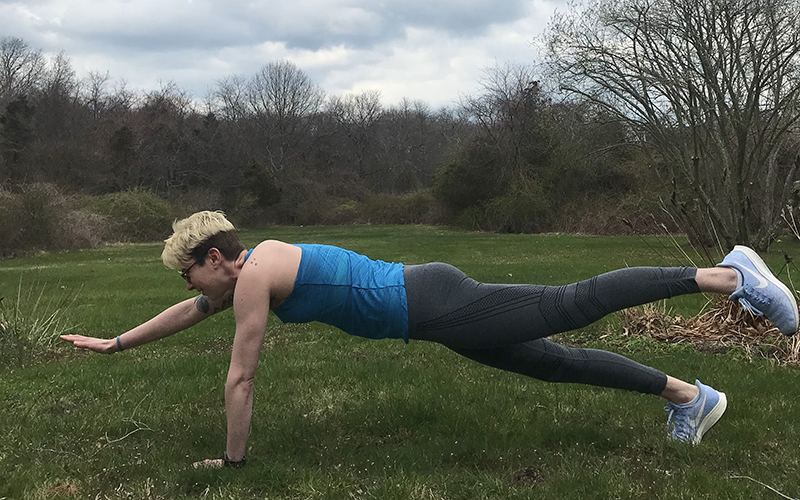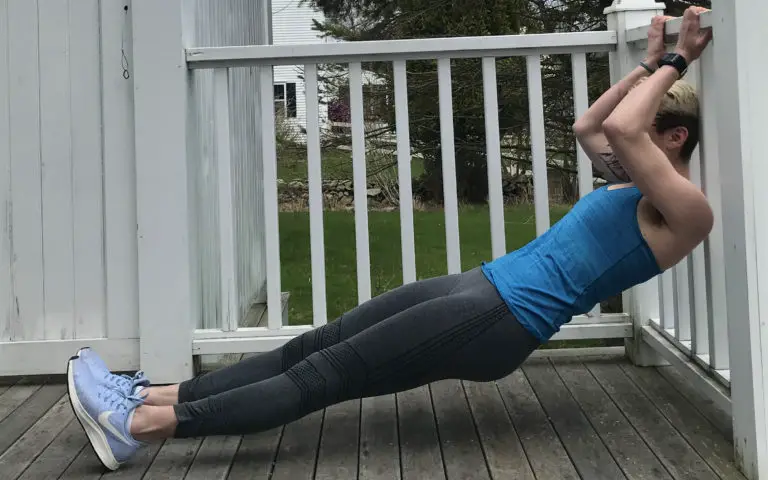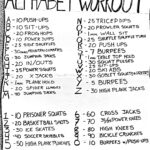Rock climbing workouts are possible at home. You don’t need a mountain.
This guide shows how you can build strength indoors. Rock climbing is a thrilling sport that demands physical fitness and mental focus. Many people think climbing requires only outdoor spaces. But, you can train effectively without leaving your home. Home workouts can boost strength, flexibility, and endurance.
They prepare climbers for real rock challenges. Using everyday items, you can create exercises that mimic climbing movements. This approach saves time and resources, making rock climbing accessible to everyone. Dive into this guide to discover how you can bring the excitement of rock climbing into your living room. It’s all about making the most of what you have while staying fit and ready for the next climb.
Introduction To Home Workouts
Home workouts are gaining popularity for their convenience and effectiveness. Many people are discovering the benefits of exercising in their own space. Rock climbing enthusiasts can also train at home. You don’t need a mountain to enjoy the thrill. With the right exercises, you can build strength and agility indoors. Here, you will explore why rock climbing workouts at home are beneficial.
Benefits Of Rock Climbing
Rock climbing improves muscle strength. It targets arms, legs, and core. This workout also enhances flexibility. It requires diverse movements and stretching. Balance and coordination increase with regular practice. Climbing challenges your mental focus. It boosts problem-solving skills. Outdoor climbing offers scenic views. But indoor workouts build the same fitness.
Why Train At Home
Home training saves time. No need to travel to a gym or climbing center. It is cost-effective. You avoid membership fees or entry charges. Customize your workout. Choose exercises that suit your level and goals. Privacy is a plus. Train without the crowd’s eyes on you. Safety is manageable. Control the environment to reduce risks. Stay consistent with your routine. Home workouts fit easily into daily life.

Credit: www.99boulders.com
Essential Equipment
Rock climbing at home is a thrilling workout. It requires specific equipment for safety and effectiveness. This section will guide you through essential gear for your home climbing setup.
Basic Gear Needed
Climbing shoes are crucial. They provide grip and support. Choose shoes that fit snugly. A climbing harness is next. It ensures safety during practice. Look for adjustable harnesses for comfort. Chalk is important too. It keeps your hands dry and improves grip. You will need a chalk bag for convenience. Install a climbing wall or board at home. They simulate real rock surfaces. Fingerboards are useful for strength training. They help improve finger and grip strength. Crash pads are necessary for safety. They cushion falls and protect from injuries.
Alternative Tools
Resistance bands offer great versatility. They enhance strength and flexibility. Use them for warm-ups and cool-downs. Pull-up bars are excellent for upper body strength. They aid in building arm and back muscles. Weighted vests add intensity to workouts. They increase endurance and power. Yoga mats are simple yet effective. They provide comfort during exercises. Foam rollers help in muscle recovery. They reduce soreness after climbing sessions. You can use household items creatively. Books or towels can substitute for weights. These alternatives work well if you have limited space.
Warm-up Routine
Begin your rock climbing workout at home with a warm-up routine. Stretch arms, legs, and back to prepare your body. Focus on balance and flexibility exercises to enhance your climbing skills.
### Warm-Up Routine Before diving into your rock climbing workout at home, it’s essential to prepare your body with a proper warm-up. This routine is crucial for preventing injuries and enhancing your performance. A well-structured warm-up gets your muscles ready and your mind focused. ### Stretching Exercises Stretching is a great way to start your warm-up. It helps increase flexibility and blood flow to your muscles. Consider adding a mix of dynamic stretches like arm circles and leg swings. These movements prepare your muscles for the climbing motions ahead. Don’t forget static stretches for the calves, hamstrings, and shoulders. Hold each stretch for about 20 seconds. This combination prepares your muscles for the intense workout. ### Joint Mobility Drills Joint mobility drills are another important part of your warm-up. They improve your range of motion and prepare your joints for the climbing stress. Start with wrist circles and ankle rotations. These are small movements, but they make a big difference. Move on to shoulder and hip rotations. They loosen up your body and help prevent strains. You’ll feel more agile when tackling tricky holds. Ever noticed how athletes seem to glide effortlessly? Their secret often lies in their warm-up routine. Are you giving your joints the care they need? If you skip this step, you might feel stiff and less confident on your first climb. Take the time to focus on your body’s readiness. You’ll thank yourself later.Strength Training
Rock climbing requires immense physical strength and endurance. To excel in this sport, you need a robust strength training routine. Even if you can’t hit the climbing gym every day, a home workout can significantly boost your performance. Let’s dive into two crucial components of strength training: bodyweight exercises and resistance training.
Bodyweight Exercises
Bodyweight exercises are incredibly effective for building strength without any equipment. They engage multiple muscle groups, mimicking the movements you perform while climbing.
- Push-ups: Strengthen your arms, chest, and shoulders. Increase reps as you build stamina.
- Pull-ups: Enhance your grip and upper body strength, essential for climbing. If you don’t have a pull-up bar, consider door frame exercises or invest in one.
- Planks: Improve your core stability. A strong core supports your balance and endurance on the wall.
These exercises are not only convenient but also versatile. You can perform them anywhere, making it easier to stick to your routine. Remember, consistency is key to progress.
Resistance Training
Resistance training helps you target specific muscles and increase their strength. You don’t need fancy gym equipment; simple resistance bands or dumbbells can do wonders.
- Squats with Dumbbells: Boost leg strength for those powerful climbs. Add weights gradually to challenge yourself.
- Deadlifts with Resistance Bands: Strengthen your back and core, crucial for holding positions during climbs.
- Lateral Raises: Develop shoulder strength, aiding in pull-ups and overhead reaches.
Resistance training allows you to focus on muscle groups that might be underutilized in bodyweight exercises. It complements your climbing skills by enhancing your overall muscle strength.
Have you ever felt your legs give out midway through a climb? These workouts can prevent that. By diversifying your strength training, you’re preparing your body for varied challenges on the wall.
Are you ready to take your climbing to the next level? Implement these exercises into your routine and watch your performance soar. Your home is your new gym. Make every session count!
Endurance Building
Building endurance is crucial for any rock climber. It ensures you can climb longer and tackle tougher routes. At home, you can focus on workouts that boost your stamina. This will help you stay energized during climbs. Let’s dive into some effective methods.
Cardio Workouts
Cardio workouts are essential for endurance. They improve heart health and boost stamina. You don’t need fancy equipment. Start with jumping jacks or high knees. Aim for 20 minutes daily. These exercises raise your heart rate and build endurance. Try running in place if you have limited space. Set a timer and go for it. Consistency will bring noticeable improvements.
Circuit Training Tips
Circuit training combines strength and cardio. It keeps your heart rate up. Choose 3-5 exercises. Examples include push-ups, squats, and planks. Perform each exercise for 30 seconds. Rest for 10 seconds between exercises. Repeat the circuit 3 times. This boosts endurance and strengthens muscles. Gradually increase the intensity. Add more circuits as you progress. This keeps your routine challenging.
Core Stability
Core stability is crucial for rock climbing. It helps maintain balance and control. A strong core reduces injury risks. It also enhances climbing performance. At home, focus on core exercises. They build strength and endurance.
Core Exercises
Planks are simple yet effective. Hold a plank position for 30 seconds. Increase the duration as you get stronger. Side planks target obliques. They help stabilize your side movements. Bicycle crunches engage multiple muscles. They are great for building endurance.
Balance Drills
Balance is key in climbing. Practice standing on one leg. Switch legs to work both sides. Use a balance board if available. It challenges your stability further. Try single-leg toe touches. They improve balance and coordination. Incorporate these drills into your routine. They enhance your climbing skills.
Flexibility And Recovery
Flexibility and recovery are key elements in a rock climbing workout. They help prevent injuries and improve performance. Stretching keeps muscles loose and ready for action. Recovery ensures the body heals after intense exercise. Both are important for climbers, especially at home.
Cool-down Techniques
Cool-down exercises help relax muscles after climbing. Start with deep breathing to lower heart rate. Follow with gentle stretches targeting arms and legs. Hold each stretch for 20 seconds. This aids muscle recovery and reduces soreness. Include light movements like arm circles. They enhance flexibility and promote relaxation.
Rest And Recovery Strategies
Rest days are crucial for muscle repair. Aim for at least one rest day weekly. Hydration supports recovery and reduces fatigue. Drink plenty of water throughout the day. Proper sleep is vital for muscle growth. Ensure 7-9 hours of sleep nightly. Nutrition also plays a role in recovery. Eat balanced meals with protein and carbs. These habits improve performance and speed up recovery.

Credit: www.trainingbeta.com
Progress Tracking
Tracking progress in rock climbing workouts at home boosts motivation. Use a journal to record daily exercises and milestones. Celebrate small victories to stay inspired and improve skills steadily.
Tracking your progress is essential when doing a rock climbing workout at home. It keeps you motivated and helps you identify what works and what doesn’t. Knowing how far you’ve come can boost your confidence and push you further. Let’s delve into how you can efficiently monitor your progress with a few practical steps.Setting Goals
Before you start, set clear and achievable goals. Ask yourself what you aim to accomplish in your rock climbing workout. Do you want to improve your endurance, build muscle, or enhance your technique? Write down specific targets like increasing grip strength by a certain percentage or completing a climbing sequence faster. This gives you a clear direction and something concrete to strive for.Monitoring Improvements
Once your goals are set, it’s time to track improvements. Keep a journal or use a digital app to log your workouts. Note down details like duration, difficulty, and how you felt after each session. Consider setting up a simple chart. For instance, track the number of pull-ups you can do or the time you can hold a plank. Seeing these numbers improve over weeks is incredibly motivating. Review your progress every few weeks. Are you hitting your targets? If not, tweak your routine or set new, more attainable goals. Your path to improvement should be flexible, adapting to your evolving fitness level. Tracking your progress is not just about numbers. Reflect on how your body feels and how your climbing is improving. Celebrate small victories and let them propel you forward. What goals will you conquer next?
Credit: www.outdoors.org
Frequently Asked Questions
How To Train At Home For Rock Climbing?
Use a hangboard for grip strength and finger training. Incorporate pull-ups and core exercises to build overall strength. Practice technique on a home climbing wall if available. Stretch regularly to enhance flexibility and prevent injuries. Stay consistent with your training for the best results.
Can You Get Fit By Just Rock Climbing?
Rock climbing can enhance fitness by building muscle, improving flexibility, and boosting cardiovascular health. It’s a full-body workout targeting core, arms, and legs. Regular climbing sessions help increase strength, endurance, and balance. For comprehensive fitness, combine climbing with other exercises like running or yoga.
Is Rock Climbing A Good Way To Lose Weight?
Rock climbing is an effective way to lose weight. It combines cardio and strength training. This boosts metabolism and burns calories. It also improves muscle tone and endurance, supporting weight loss goals. Engaging in regular rock climbing sessions can contribute significantly to a healthy weight loss plan.
Is Rock Climbing An Effective Workout?
Yes, rock climbing is an effective workout. It builds strength, endurance, and flexibility. It engages multiple muscle groups and improves cardiovascular health. Climbing also enhances mental focus and problem-solving skills. It’s a fun, challenging activity that burns calories and promotes overall fitness.
Conclusion
Rock climbing workouts at home offer great benefits. They build strength and flexibility. You can improve your grip and endurance. No need for fancy equipment. Just use what you have. Consistency is key for progress. Try different exercises to keep it fun.
Stay motivated by setting small goals. Celebrate each achievement. Share your journey with friends. This keeps you accountable. Remember, every step forward counts. Enjoy the process. Feel proud of your efforts. Embrace the challenge. Your body and mind will thank you.
Keep climbing, even at home!
{ “@context”: “https://schema.org”, “@type”: “FAQPage”, “mainEntity”: [ { “@type”: “Question”, “name”: “How to train at home for rock climbing?”, “acceptedAnswer”: { “@type”: “Answer”, “text”: “Use a hangboard for grip strength and finger training. Incorporate pull-ups and core exercises to build overall strength. Practice technique on a home climbing wall if available. Stretch regularly to enhance flexibility and prevent injuries. Stay consistent with your training for the best results.” } } , { “@type”: “Question”, “name”: “Can you get fit by just rock climbing?”, “acceptedAnswer”: { “@type”: “Answer”, “text”: “Rock climbing can enhance fitness by building muscle, improving flexibility, and boosting cardiovascular health. It’s a full-body workout targeting core, arms, and legs. Regular climbing sessions help increase strength, endurance, and balance. For comprehensive fitness, combine climbing with other exercises like running or yoga.” } } , { “@type”: “Question”, “name”: “Is rock climbing a good way to lose weight?”, “acceptedAnswer”: { “@type”: “Answer”, “text”: “Rock climbing is an effective way to lose weight. It combines cardio and strength training. This boosts metabolism and burns calories. It also improves muscle tone and endurance, supporting weight loss goals. Engaging in regular rock climbing sessions can contribute significantly to a healthy weight loss plan.” } } , { “@type”: “Question”, “name”: “Is rock climbing an effective workout?”, “acceptedAnswer”: { “@type”: “Answer”, “text”: “Yes, rock climbing is an effective workout. It builds strength, endurance, and flexibility. It engages multiple muscle groups and improves cardiovascular health. Climbing also enhances mental focus and problem-solving skills. It’s a fun, challenging activity that burns calories and promotes overall fitness.” } } ] }




